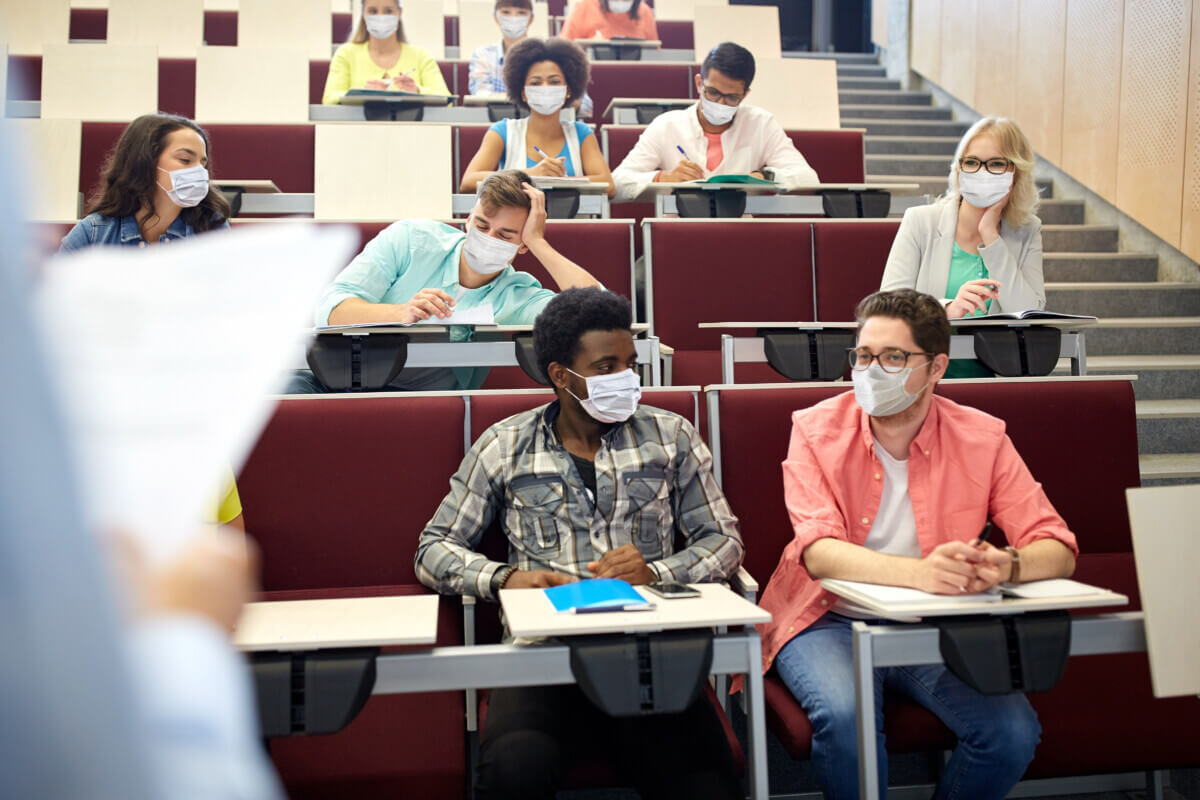
Students were asked about their mental health and well-being in May, June, and July 2020, and again in May 2021. (© Syda Productions - stock.adobe.com)
WASHINGTON — Besides carving one's career path, the quintessential college experience is all about new adventures, forming lasting friendships and romances, and experiencing independence for the first time. None of that exactly meshes well with social distancing. Indeed, it's not convenient and certainly isn't enviable, but millions of college students are facing a peculiar situation come the beginning of the fall semester this year.
If you're doubtful that college freshmen will show much interest in self-isolating in their dorm rooms, you're not the only one. That's, at least, according to a recent survey of close to 70 college and university leaders (vice presidents of student affairs, deans of students, etc). Nearly three in four educators are expressing significant and near universal concern that college students, especially undergrads, will fail to properly social distance once classes start back up.
The survey, put together by education firm EAB, also asked respondents how they're planning on convincing or encouraging their students to follow COVID-19 safety guidelines. For the most part, administrators are hoping that positive reinforcement (social media campaigns, handing out face masks during move-in day, etc) will be enough to get the job done.
Additionally, most educators are still unsure how exactly they'll be able to enforce these new rules. Will punishments come down for disobedience? These are the types of questions colleges all over the country must consider.
Social distance dilemma
When asked about their absolute biggest concern for the fall semester, 72% say it's making sure students follow social distancing in dormitories. The next greatest worry is ensuring students social distance from one another within on-campus common areas (57%). Many others (52%) say they're primarily concerned about social distancing off-campus.
One solution that nearly all officials (93%) are in the process of implementing is floor markings and signs to remind students to stay at least six feet away from each other.
“Enforcing social distancing in classrooms, libraries, and other public spaces won’t be easy, but schools know they will have little to no control over whether students adhere to safety guidelines when they go off campus or in private spaces in residence halls,” says EAB Managing Director Dr. Liz Rothenberg in a release.
What about college faculty, staff, and graduate students? Most administrators express more optimism about educating and promoting social distancing among these groups. For comparison's sake, less than 31% say the same regarding undergraduate students.
Solutions include ‘welcome kit,' potential ban from campus
Circling back to those positive reinforcement strategies for a moment, 79% of respondents are going to set up an extensive social media ad campaign focused on social distancing. Another 75% are hoping they can count on student leaders and “campus influencers” to promote the new social distancing rules. Meanwhile, 67% want each arriving student to receive a “welcome kit” containing face masks and educational materials.
As far as potential repercussions for distancing disobedience, some respondents aren't planning on issuing any formal punishments. Others, though, will refer disobedient students for more COVID-19 education. Some are even toying with the idea of banning non-compliant students from campus for up to two weeks.
“Preventing intentional and unintentional biases is top of mind for every institutional leader, including when it comes to making sure these new COVID-19 policies and procedures are enforced equally and fairly and that they won’t disproportionately affect students who are already facing greater challenges,” Dr. Rothenberg concludes.
[fb_follow /]










